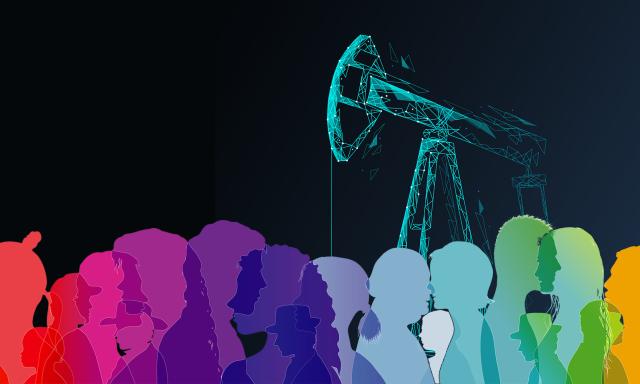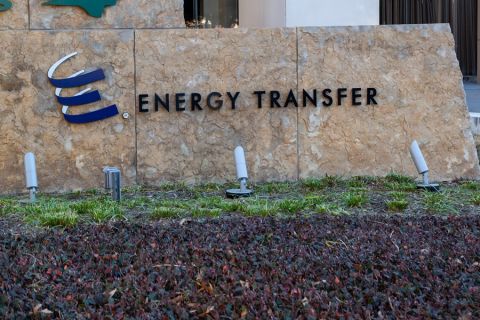
(Source: HartEnergy.com; Melitas, LuckyStep/Shutterstock.com)
A lack of workforce diversity can damage the bottom lines of oil and gas companies, panelists at the recent GasTech Virtual Summit 2020 said, with the current downturn harboring the potential to exacerbate those issues.
“Sometimes diversity efforts take an active step in the wrong direction,” said Julie Mayo, energy transactions partner and head of U.S. oil and gas at the Norton Rose Fulbright international law firm. “We certainly saw that to some degree in the 2008 economic crisis and also the 2014 oil price crash, where diverse employees were disproportionately impacted by layoffs, furloughs and salary cuts. Those choices have consequences because we all know that a larger number of women in leadership roles leads to higher profits and that’s just looking at gender diversity.”
Companies represented by the four panelists already have formal programs in place. Tracy Lothian, Singapore-based senior vice president, LNG at Exxon Mobil, has been among those spearheading the Power Play initiative, which connects women in the LNG business. The program will announce its 2020 awards on Sept. 16. Awards, she said, can illustrate accomplishments in ways that statistics cannot.
“We really shouldn’t be having to justify that women improve the business results,” Lothian said. “This showcasing is so important. Providing all of this information to everyone—to small companies, large companies, individuals looking in at the industry—so that we can really push through and have a paradigm shift. We need it to take just another few years so that we can get to that tipping point and we have equal footing in the energy industry.”
‘Unconscious Bias’
Gender is just one aspect of any company’s diversity policy. Sempra Energy has sponsored eight “community conversations” or online forums for employees to discuss social justice issues in the wake of this summer’s unrest. The dialogue has led to Sempra creating a racial equity action plan.
“Within our employee population, we are targeting unconscious bias training and I think this speaks to an inclusive environment across all people,” said Lisa Glatch, Sempra LNG’s president and COO. “Experts tell us that we all have unconscious bias—we just do. Unconscious bias education just gives us the ability to begin really recognizing that and minimizing these blind spots and so overcoming this bias is certainly one of the goals as we try to build the most inclusive culture that we can.”
Sempra’s plan has three goals:
- Increase the number of employees from underrepresented communities in its workforce, with a particular focus on black boys;
- Increase the number of organizational leaders at all levels from underrepresented communities with a particular focus on black and Asian-Americans; and
- Create enterprise-wide initiatives to support communities of color with targeted volunteer and charitable giving programs.
At Baker Hughes, 35% of the U.S. workforce is from minority groups and women make up 21% of the company’s senior leadership.
Because of the COVID-19 pandemic, “I believe that the strategy on diversity is getting an acceleration,” said Maria Sferruzza, the company’s senior vice president for Asia-Pacific. Among the initiatives are supporting STEM education by providing in-class mentors.
‘Authentic Selves’
While the pandemic has taken a wrecking ball to the country’s health, economy and psyche, Mayo has identified positives that have emerged in the workplace.
“One of the most interesting aspects of working from home to me has been that, in some ways, it feels like it’s leveled the playing field,” she said. “Men—and women—who previously believed that work could only be done in the office and only during business hours now are forced, in a way, to understand and appreciate the value of remote and flexible work.”
That perspective was echoed by Sempra LNG’s Glatch.
“COVID has shown us that people can produce terrific work even if they aren’t in an office in a very prescribed way,” she said, adding that Sempra is examining flexible work approaches following the pandemic.
In the past, those accommodations had been viewed through a gender-based lens as primarily offered to women and specifically to mothers, said Mayo said, who endorsed how Zoom has made employees’ full lives’ visible.
“Seeing people’s whole lives reminds us that we are each more than our work,” she said. “We are each more than our ‘nine-to-five.’ We have other demands on our time and our attention. Perhaps seeing that inspires a bit more empathy, kindness, flexibility and frankly, awe of what people are able to manage in their lives while doing their jobs.”
That type of digital interaction also makes it easier for employees to bring their “authentic selves” to work, especially when they don’t have to go anywhere to get there.
“Hopefully, an increased openness to employees’ circumstances and acceptance of their authentic selves will also open the door to furthering efforts on racial equality and social justice,” Mayo said. “One of the things that we think about in the racial equality and social justice movement is this idea of making sure that everyone can bring their authentic self to work because that’s what makes people feel fulfilled. That is one of the things that really contributes to fulfillment in our professional lives—feeling like we can be ourselves where we spend so much of our time and put so much of our energy.”
Recommended Reading
For Sale? Trans Mountain Pipeline Tentatively on the Market
2024-04-22 - Politics and tariffs may delay ownership transfer of the Trans Mountain Pipeline, which the Canadian government spent CA$34 billion to build.
Energy Transfer Announces Cash Distribution on Series I Units
2024-04-22 - Energy Transfer’s distribution will be payable May 15 to Series I unitholders of record by May 1.
Balticconnector Gas Pipeline Back in Operation After Damage
2024-04-22 - The Balticconnector subsea gas link between Estonia and Finland was severely damaged in October, hurting energy security and raising alarm bells in the wider region.
Wayangankar: Golden Era for US Natural Gas Storage – Version 2.0
2024-04-19 - While the current resurgence in gas storage is reminiscent of the 2000s —an era that saw ~400 Bcf of storage capacity additions — the market drivers providing the tailwinds today are drastically different from that cycle.




